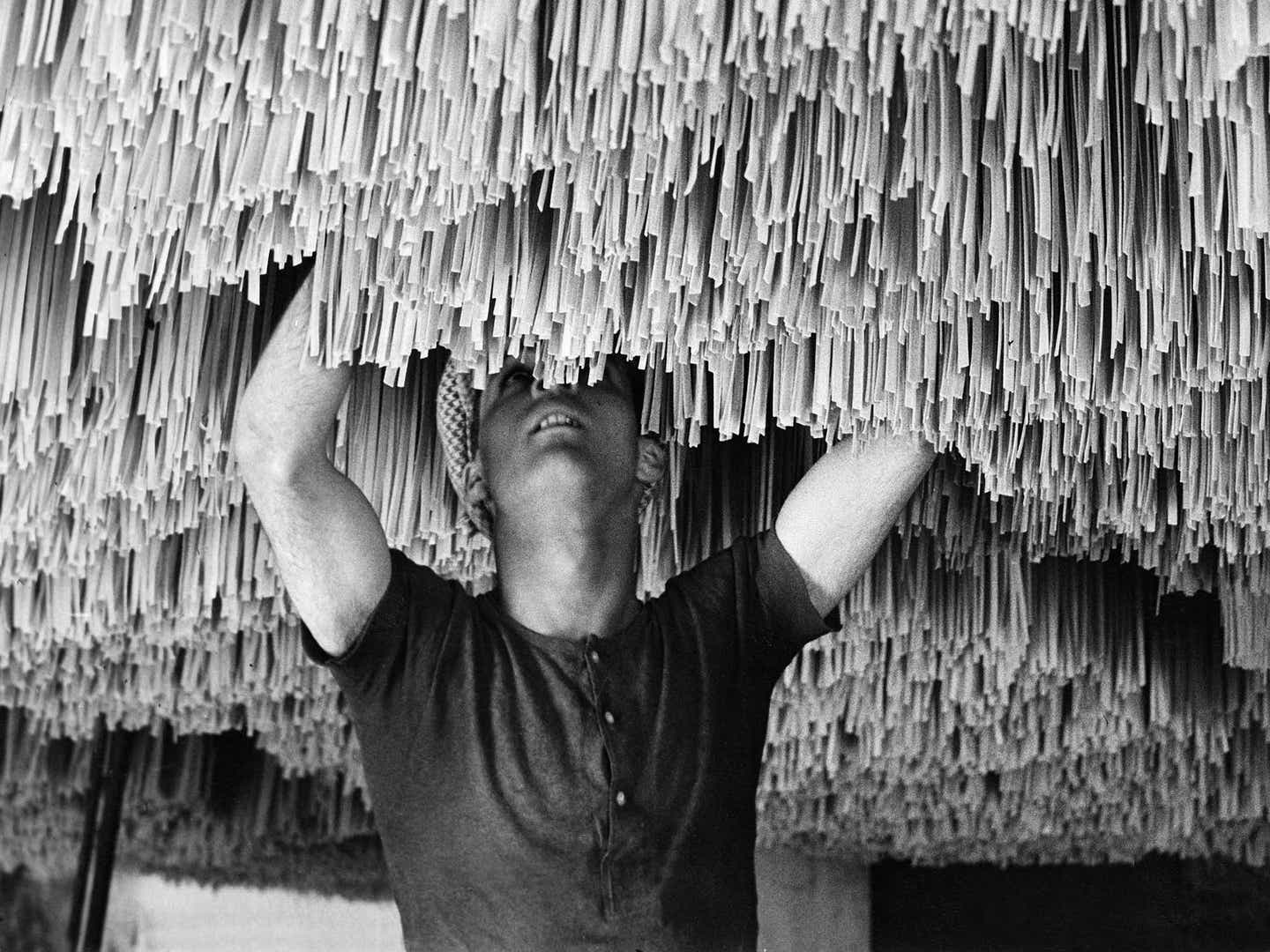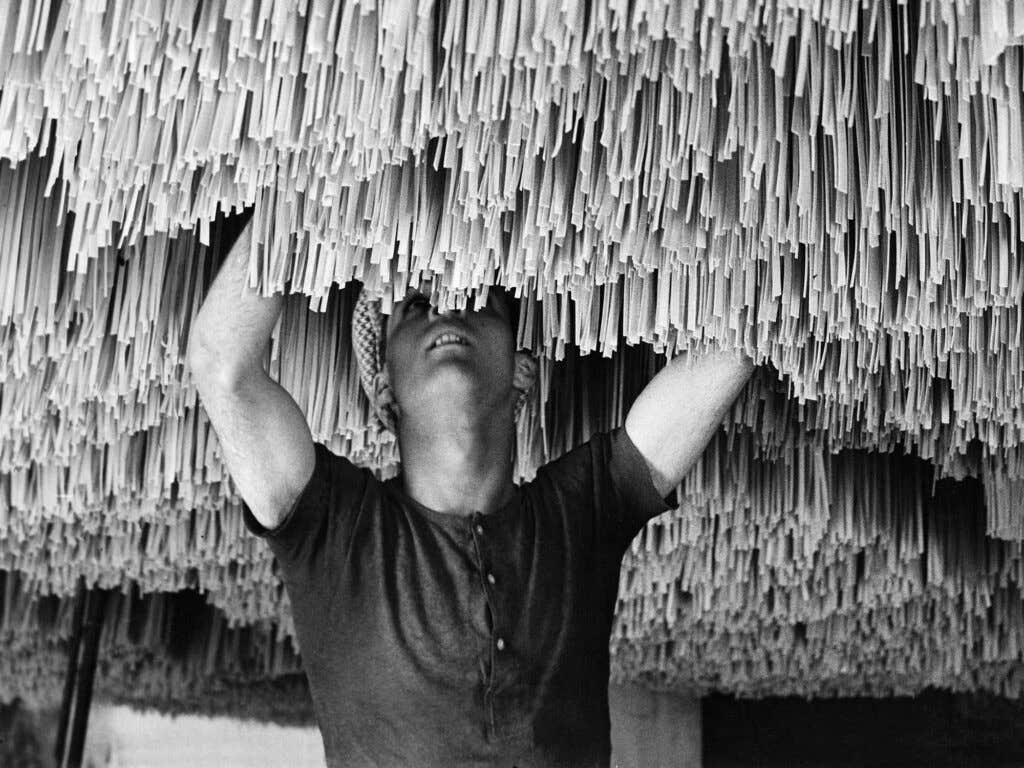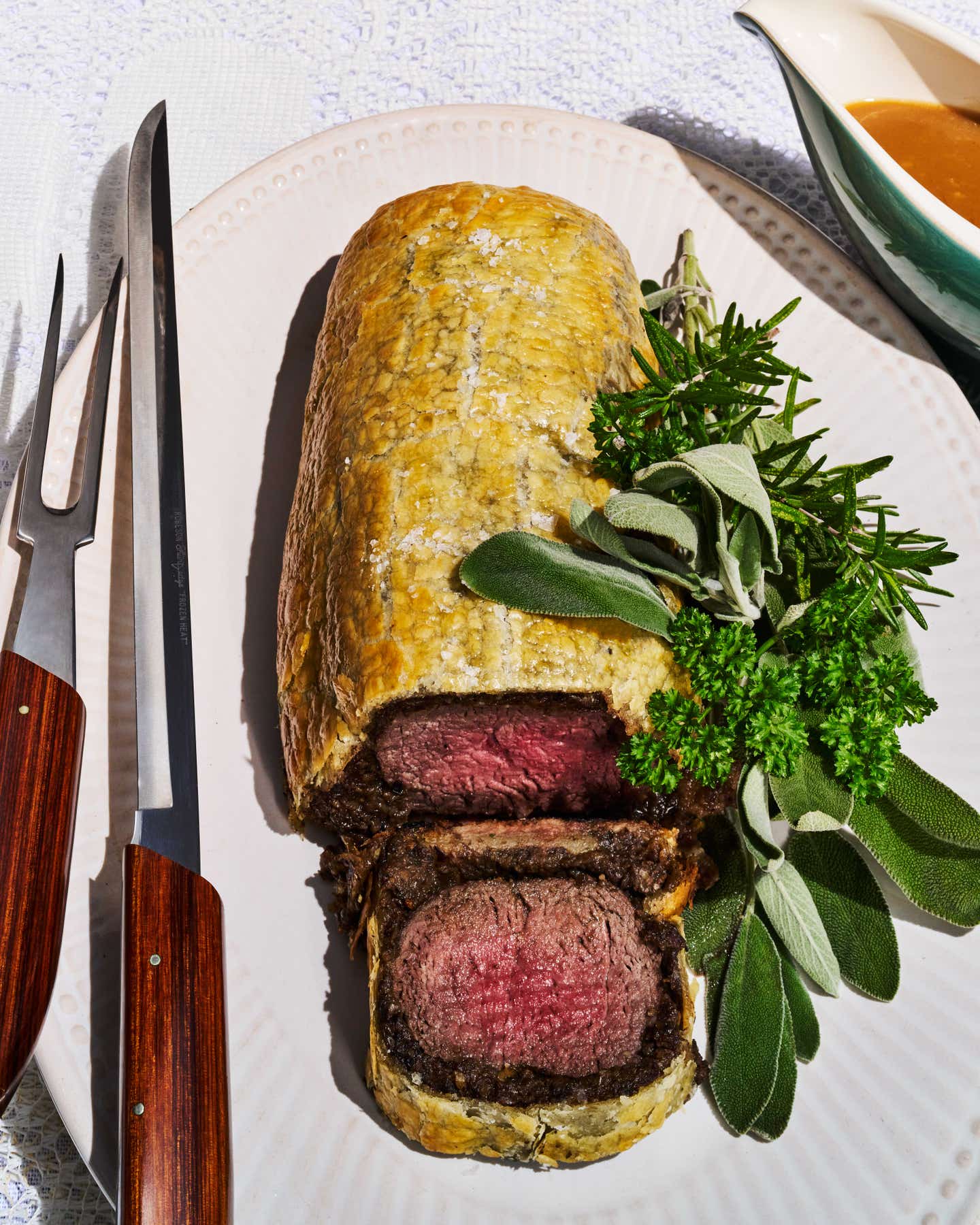
Real Talk: Dried Pasta is Just as Good as Fresh
In Italy, dried pasta is a just as beloved as fresh, so why do so many cooks thumb their noses at it?

Speaking extremely generally, it’s possible to say Italy has two distinct pasta cultures. In the north, they glorify pasta fresca, or fresh pasta. In central and southern Italy, machine-made pasta secca, dried pasta, is dominant. One is made by hand with egg and soft flour. The other is extruded from a dough of durum semolina and water. Neither is “better” than the other, any more than pappardelle al ragù is better than bucatini all’amatriciana. They are different foods with different uses, representing different traditions. But in America, especially in certain high-end restaurants, it can be difficult to escape the idea that eggy fresh pasta is the true pasta.
The large-scale production of dried pasta has a longer history in Italy than tomato sauce. The first known mention of dry noodles produced for long-term storage and export comes from the 12th-century Arab geographer Al-Idrisi, who lived at the court of Roger II, the Norman king of Sicily. He describes a town east of Palermo, Trabia, "an enchanted place endowed with perennial waters and mills," where enough "strings" of dough were made to supply both Calabria and Muslim territories. Dried pasta had probably been made in Italy for centuries before then, and by the late 18th century, the time of the Grand Tour, Neapolitans eating maccheroni on street corners with their hands constituted an attraction for wealthy tourists from Northern Europe.

The town of Gragnano, 20 miles to the south of Naples, may not be where commercial pasta production originated, as is sometimes claimed, but it's here that artisanal production reached its peak. The town's main street was rearranged to capture the prevailing winds, making it singularly well suited to traditional drying of pasta, the most difficult stage of manufacture. "Make the pasta with the [warm, moist, southerly] scirocco wind and dry it with the [cold, dry, Alpine] tramontana" was the maxim that guided Gragnano pasta artisans. Drying depended not only on the winds but also on the intuitive science of the head pastaio, whose meteorological and astronomical prowess needed to rival that of a ship's captain. The pastaio called the shots during the drying process, which could take eight days to three weeks, depending on time of year. Any error along the way could mean the pasta would fragment in cooking or even become rancid. Breaking a piece of pasta near his ear, the pastaio decided whether a batch could survive export by sea.
These days drying is done entirely indoors, but the town still supports an astonishing density of quality producers, with makers like Garofalo, Di Martino, and Afeltra all clustered within a short walk of one another. It’s producers like these, in Gragnano and around the rest of Italy, who have elevated dried pasta beyond an industrial commodity into something magical, through careful selection of high-quality durum wheat, careful extrusion through traditional bronze dies, and a painstaking drying process. And it’s their product that drives amatriciana, carbonara, and puttanesca, for which dried pasta is practically prescribed by law. These dishes rely on the satisfying bite and wheaty, nutty flavor that you can’t get any other way.
Keep Reading
Continue to Next Story










